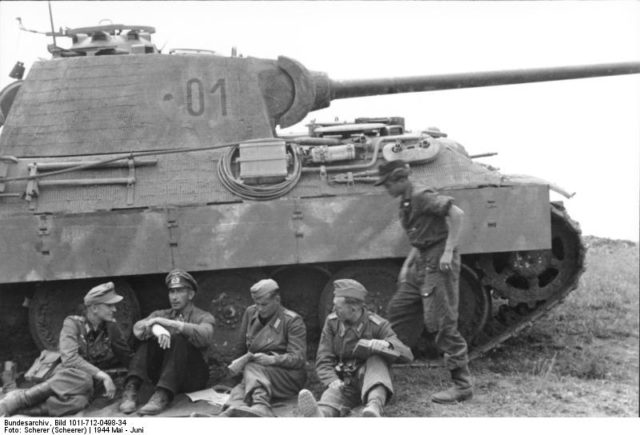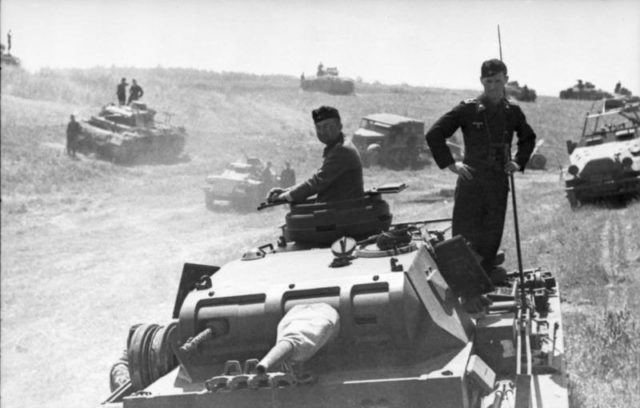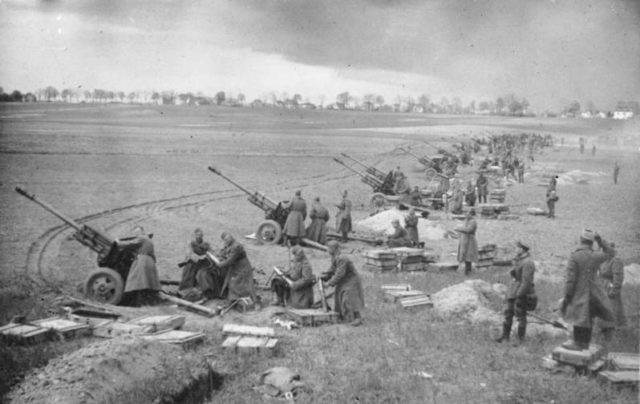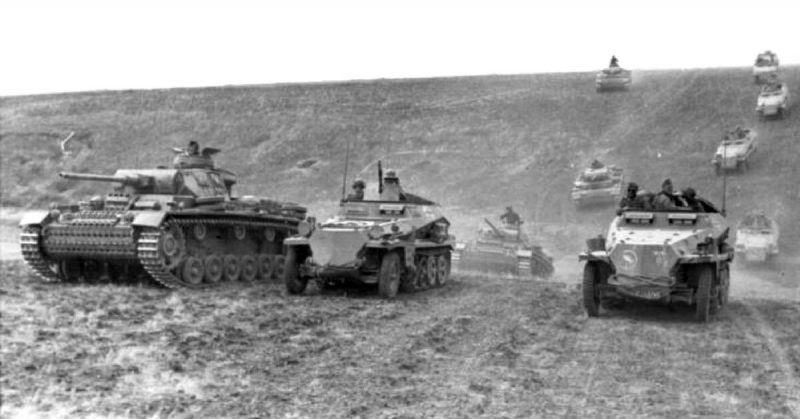Willi Langkeit was one of the most gifted German tank commanders of WWII. Repeatedly honored for his service and promoted to considerable rank for his age, he fought until the end of the war. He always gave credit for his success to his men rather than to himself.
Origins of a Soldier
Born on June 2, 1907, Langkeit was the son of a Prussian farmer. At the age of 17, he joined the German army. At the time, recruitment was restricted, and only the best could become officers.
Langkeit was fascinated by machinery which led to a position in the armored forces. By 1938, he was a captain in the 36th Panzer Regiment.
Poland and France
Langkeit’s first experience of war came in Poland, during the 1939 invasion. There, he earned the first of many medals, the 2nd Class Iron Cross.
The following summer, he showed such skill as a commander in France that he was given temporary command of a battalion. His unit played an important part in breaking through the Weygand Line.
Into Russia
Langkeit’s greatest successes came in Russia. In 1941, he was posted there with the 14th Panzer Division, initially in an uninspiring role guarding the flank of an advance.
As the Germans prepared to attack Rostov, the Panzer units were reorganized. Langkeit was in command of Armoured Battlegroup Langkeit, a formation based on Rommel’s successful desert battlegroups. The unit included infantry in armored personnel carriers as well as tanks.
Langkeit’s performance in the assault on Rostov was extraordinary. Commanding from the front, he led his men in a series of bold advances against entrenched enemies. He fended off multiple counter-attacks by massed Russian forces.
His tank was hit several times. On one occasion, most of the crew were killed, but Langkeit got out alive. Equipped only with a pistol, he single-handedly destroyed a Russian machine gun nest before rejoining his formation.
The battlegroup seized the bridge over the Don before the Russians could destroy it. Rostov was taken.

Driving to Stalingrad
Langkeit next participated in the advance on Stalingrad. He was made battalion commander and led the capture of Novocherkasak. Further promotions followed, and in December 1942 Langkeit became an unusually young divisional commander.
Meanwhile, the Germans reached Stalingrad. There, they became bogged down and then trapped. Langkeit and his men fought in a series of tank duels against their Soviet opposite numbers.
On January 19, 1943, Langkeit was injured. He was flown out of the German pocket around Stalingrad, and so missed the collapse of the German forces there.
Fresh Attacks
When Langkeit returned to active duty, it was at the head of a new panzer division sent to fight the Russians. Soon after, he was given command of a larger battlegroup.
With that force, he led successful attacks against the advancing Russians. He smashed the advance guard of a Soviet attack around Vladimirovka and overran enemy trenches in Vodyana.
However, there was no turning back the red tide. The Russians kept coming.
Grossdeutschland in Romania
In March 1944, Langkeit was transferred to command the panzer regiment of the elite Grossdeutschland Division.
Grossdeutschland was serving as a rearguard for German forces retreating through Romania where the oilfields were vital to the German war effort. The Reich was clinging on as hard as it could.
On April 26, 20 Soviet infantry divisions and a massive force of tanks struck the German lines. Langkeit’s forces were drawn into a four-day battle that exhausted the Soviets, forcing them to stop and rest.
There was no time to regroup. The German General Manteuffel launched a counter-attack. In one engagement alone, the Grossdeutschland Panzer regiment destroyed 56 enemy tanks. The Russians were reeling.

On the Tirschtiegel Line
Next, Langkeit and the Grossdeutschland troops were posted to East Prussia. There they were meant to launch strikes against the advancing Soviets from behind the Tirschtiegel defense line.
However, the line had been poorly prepared, and the defenses barely existed.
Forces in the area were in chaos due to reorganizations. Langkeit was put in charge of one of the new all-arms fire brigades. He commanded not an elite division but a mix of old and fresh troops who had never served together before. He commandeered an entire artillery formation to bolster his forces.
Reppen
Sent in a flanking attack against the advancing Russians; instead, Langkeit and his men became surrounded by them. Through an enormous effort, they joined with SS forces in Reppen. Scattered remnants of German troops gathered around them.
The main road out of Reppen was clogged with vehicles. A breakout that way failed. Russian bombardments destroyed the town, leaving the desperate troops defending ruins.
At last, Langkeit led a breakout through the woods. For three days, his men fought a battle to escape the Russian encirclement. When they broke through, a stream of military and civilian vehicles poured out behind them.

Honors to the End
After Reppen, Langkeit was ordered to hold enemy forces from crossing the Oder. He fought fiercely on both sides of the river and was credited with stalling the Soviet advance. He was promoted to major general.
Near the end of April 1945, as the Allies advanced across Germany, he was awarded the Panzerkampfabzeichen in Gold, the highest panzer decoration, for leading 75 successful tank engagements.
By the last days of the war, he was fighting with a decimated force. On May 7, he finally surrendered.
After the War
Langkeit spent six years as a prisoner of the Americans. After his release, he joined the German Frontier Defence Force. There, he formed and led special boat patrols.
When offered praise for his service in the war, Langkeit rejected it. He always said his medals marked the loyalty and bravery of the men he had led.
Source:
James Lucas (1996), Hitler’s Enforcers: Leaders of the German War Machine 1939-1945
